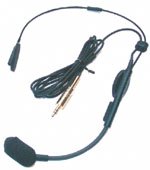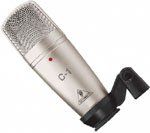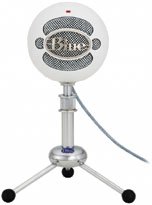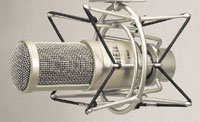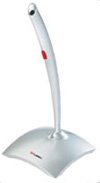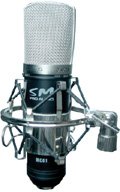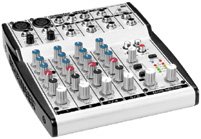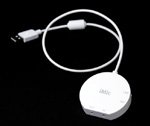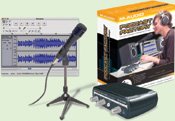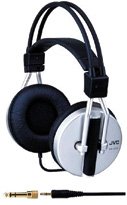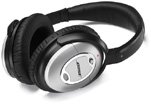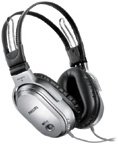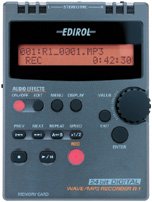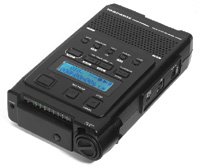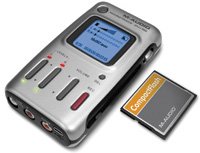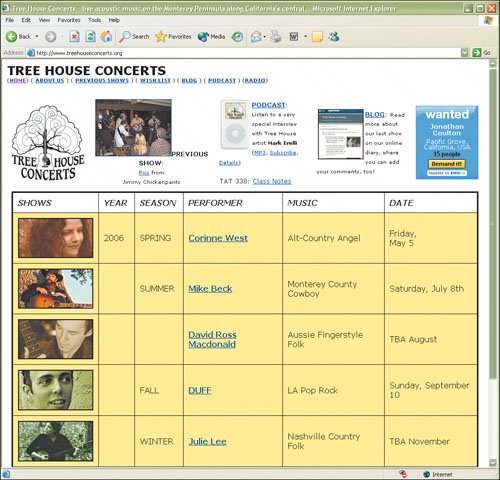Equipment
| One great thing about audio podcasting is that you can do it at home with a basic Mac or PC and an inexpensive microphone (which may even come with the computer). High-end equipment is nice, to be sure, but many of the best podcasts out there are recorded and edited with basic equipment and widely available software. Still, there are several ways to set up a podcast recording "studio," from using nothing more than a computer with a microphone to having high-end microphones, preamps, digital recorders, and the like in a sound-dampened room. For serious podcasters, the list of necessary equipment is as follows:
This section examines the equipment you need to get up and running (software is covered a little later on). I need to point out that many devices can make podcasting easier or higher quality, but I cannot cover every one of them in this book. Instead, I examine several key pieces of equipment in each category. MicrophonesArguably the most important device in the creation of an audio podcast, the microphone stands between your voice and the podcast file. As such, it behooves you to ensure that the quality of the recording is as good as it can be, based on your budget and expectations. Two main types of microphones are used for podcasting: condenser microphones and dynamic microphones. Condenser microphones use a capacitor to capture sound. This works when the pressure from the sound changes the space between the thin membranes in the capacitor. The advantage of a condenser microphone is that it has a very broad frequency response; the down side is that it requires a source of power (such as a battery) to charge the capacitor so that it can work.
Condenser microphones require external power to function. This power often comes from a preamp device and is referred to as phantom power. Dynamic microphones work by measuring the movement of a wire coil around a magnetic field as the sound waves agitate the wire. The advantages of a dynamic microphone are that it is cheaper to make than a condenser microphone and can be miniaturized more easily. The down side is that the frequency response isn't as good as that of a condenser microphone, making the sound quality inferior.
Condenser microphones sport significantly better fidelity than dynamic microphones, but this also makes them more prone to crackling, background noise, and P-popping (the tendency for words starting with the letter P to make a popping sound when spoken). Fortunately, there are ways to eliminate these problems; see the "Popping Ps" sidebar later in this chapter. Condenser microphones also require power, which often must be supplied by a preamp device (adding around $100 to the cost).
If the frequency response (quality of sound) is important to you, I recommend a condenser microphone. Most microphones that come with computers are dynamic microphones, and although they are acceptable, you will have to purchase a quality microphone eventually if you want your podcasts to sound professional. Apple Computer Built-In Microphones Frequency Response: Varies Power: Internal Many Apple computers come with a built-in microphone (Figure 3.7). The newest iMacs have a microphone (and/or camera) in their screens, and many older Macs come with an external microphone that can be plugged in. Although these microphones do not offer super-high quality, and although there can be some issues with the computer's fan sound getting picked up, these built-in microphones can do the job in a pinch. Figure 3.7. This image of an iBook G4 shows the built-in microphone to the right of the screen. Photo courtesy of Apple Computer, Inc Audio Technica ATM73A-SPFrequency Response: 25 Hz17,000 Hz Power: Battery This headset cardioid condenser microphone is best used by those who want to create podcasts as a one-man (or one-woman) show. At $120, the ATM73A-SP (Figure 3.8) isn't inexpensive, but it is a high-quality microphone that you can clip to your head so that you don't have to worry about being directly in front of it all the time. Figure 3.8. A headset-based cardioid condenser microphone is a great choice for a lone podcaster. Behringer C-1Frequency Response: 40 Hz18,000 Hz Power: Phantom The Behringer C-1 (Figure 3.9) is a professional-quality condenser microphone that uses a cardioid pattern to accept sound. At around $55, the C-1 is an outstanding microphone for the beginning, intermediate, or even expert podcaster. The real bonus is that the quality is high but the price is surprisingly reasonable for a product of this caliber. Figure 3.9. The Behringer C-1 condenser microphone is an awesome value and can more than do the job. Photo © Copyright 2005. BEHRINGER Spezielle Studiotechnik GmbH. Blue Microphones SnowballFrequency Response: 40 Hz18,000 Hz Power: USB port The Snowball (Figure 3.10) is a condenser microphone from Blue Microphones, and it's aimed more or less directly at the podcasting crowd. Although the Snowball has had some mixed reviews, it is a decent high-end (for simple home use) microphone for podcasters. One thing that I particularly like about the Snowball is its look; it's a great mix of modern and retro styling, making it like a piece of art on your desk! Figure 3.10. You've just gotta love the look of the Snowball. DT 234 PRO MicrophoneFrequency Response: 20 Hz18,000 Hz Power: Phantom This headset cardioid microphone costs around $99. Made by Industrial Audio Software, the DT 234 (Figure 3.11) contains a dynamic transducer, meaning that the quality is ultimately not as robust as that of a condenser microphone. That said, the DT 234 is a comfortable and reasonable performer best used by podcasters who do their work alone and don't have to share their microphones frequently. Figure 3.11. The DT 234 headset-based cardioid dynamic microphone. Electrovoice 635AFrequency Response: 40 Hz18,000 Hz Power: Phantom The Electrovoice 635A microphone (Figure 3.12) is probably the best-known microphone in the TV and radio business. A very dependable (some would say nearly indestructible) microphone, the 635A is a mainstay in the radio business and will serve any podcaster well, especially if recording on the road is in the cards. Figure 3.12. The Electrovoice 635A is a mainstay microphone and, according to Tod Maffin, is the "best microphone you can buy when starting out." Griffin LapelMicFrequency Response: 100 Hz15,000 Hz Power: Passive When it comes to portable microphones for off-site recording, the Griffin LapelMic (Figure 3.13) is one of the best solutions, and at $10, it's pretty hard to beat. Not only is it a stereo microphone, but it's also very small, and it works with virtually any recording device. If you're recording a lecture or one-half of a double-ender interview, pin the LapelMic to the subject's chest area, and start recording! Figure 3.13. The LapelMic is an excellent portable stereo microphone for recording on the fly. Heil Sound PR 40Frequency Response: 28 Hz18,000 Hz Power: None The Heil Sound PR 40 (Figure 3.14) is the high-end microphone I'm recommending for the very serious podcaster. At $325, the PR 40 isn't cheap, but it's unbelievably economical when you consider that the sound quality is comparable to that of microphones that cost hundreds (or even thousands) of dollars more. The PR 40 ships in a custom cherry wood box and comes with a mount assembly. If you are serious about the mount, a spider mount is also available. For those serious podcasters who want a high-end microphone without the high-end cost, this is the answer. Figure 3.14. The PR 40 provides high-end performance at a midrange price. It's my choice for a high-end microphone. Labtec Desk Mic 534Frequency Response: 100 Hz16,000 Hz Power: 1.5 V DC (supplied through connector cable) I include this microphone (Figure 3.15) because it is a very common device that is included with many PC bundles. As a result, many readers may already have this microphone sitting on their desks. Although it's not a high-end condenser microphone, the $14.99 price tag makes it an excellent choice for those on a budget. Figure 3.15. It's very low cost, but for beginners, this microphone can do the job. Logitech USB Headset 250Frequency Response: Headset: 20 Hz20,000 Hz Power: USB port Priced at $39.99, the Logitech USB Headset 250 (Figure 3.16) is a good choice for those who are willing to forgo the highest sound quality in exchange for mobility and ease of use. The Headset 250 plugs into the USB port of your computer and is easy to set up. The microphone is a dynamic noise-canceling device that strives to filter out background noise. The result can be a mellowing of the user's voice, but it is a small price to pay, considering what you are getting for your money with this product. The Headset 250 can be used on either a Mac running OS X or a PC running Windows 98SE, 2000, Me, or XP. Figure 3.16. A low-cost but effective headset microphone, the Logitech USB 250 is a solid option.
Logitech (www.logitech.com) has one of the largest selections of microphones for computers offered by any manufacturer. If you are looking for a microphone specifically for your PC, and you don't want to shop around, Logitech offers a huge variety. MC01 Professional Condenser MicrophoneFrequency Response: 30 Hz16,000 Hz Power: Phantom The MC01 (Figure 3.17) is the microphone for the high-end user (relatively speaking). At $180, the MC01 is designed for studio use and can be used to record both voices and musical instruments. The MC01 comes with a shock-mount system and a carrying pouch that makes it easy to tote around. Figure 3.17. The MC01 Professional Condenser Microphone is a quality high-end microphone. Stageworks CC12Frequency Response: 40 Hz18,000 Hz Power: Phantom The Stageworks CC12 (Figure 3.18) is a more-than-suitable condenser microphone that is comparable to the Behringer C-1 in many ways. The CC12 uses a supercardioid pattern to accept sound and, as such, produces very clear sound capturing. Although it lists at $99, the Stageworks CC12 condenser microphone is widely available for around $50. Figure 3.18. Like the Behringer C-1 microphone, the Stageworks CC12 offers high quality for a low price.
Radio Shack (www.radioshack.com) also has a wide selection of decent microphones that can be used for podcasting. Two examples are the Pro-Unidirectional Dynamic Microphone and the Headset Microphone with Gooseneck Boom. Both of these are very good microphones (for the price) and retail for $29.97. Audio Interfaces/PreampsMany of the microphones mentioned in this chapter require phantom powerthat is, they require a device to supply power to them so that they can work. These devices can't be plugged straight into the computer; instead, they must be connected to a preamp device that acts as an input controller between the sound input devices and your computer. Although these devices add another layer of cost to your podcast setup, they are not terribly expensive, and they also allow access to several extra features you probably didn't even consider. Preamps offer the ability to input any sort of sound into your computer, including inputs from a musical instrument (like an electric guitar) or even inputs from an old eight-track tape that you want to convert to an MP3 file. In short, a preamp computer device allows the input of virtually any kind of audio signal. For everything from making podcasts to recording an acoustic guitar track for GarageBand (a music-creation program for the Macintosh), a preamp is a wise investment.
Every preamp device mentioned in this section is capable of accepting any audio signal for conversion to a digital music or data file. For this reason, these are excellent tools for converting old audio tapes or vinyl records to MP3 files or music CDs. Behringer Eurorack UB802The Behringer Eurorack UB802 (Figure 3.20) is a preamp/mixer that defies logic when one considers what one is getting for the price. At a paltry $49, the UB802 includes
Figure 3.20. The Behringer Eurorack UB802 is the "must have" preamp/mixer for budget-conscious (and otherwise) podcasters. For the price, the UB802 has a very impressive wow factor, and it's my personal choice for anyone who wants a very capable and expandable preamp. If growing your podcast and adding features and layers are important to you, this is the best preamp for the money on the market. Behringer Tube Ultragain MIC200 The Behringer Tube Ultragain MIC200 (Figure 3.21) is a preamp that's perfect for live and hard-disk recording applications (such as creating a podcast). The great thing about the MIC200 is that it uses vacuum tubes, which create a warmer sound and make the device a great match for condenser microphones. The MIC200 includes 16 distinct preamp effects that are designed for everything from drums to vocals. At $60, the price is right. The one caveat about the functionality of this powerful device is that it does not have a USB connector, making it more difficult to connect to a PC or Mac than other preamps are. Figure 3.21. The Behringer MIC200 is a solid preamp that uses old-fashioned vacuum-tube technology. Griffin iMicThe iMic (Figure 3.22) is a USB device that functions as a universal audio adapter. With the iMic, you can connect any sound input (including microphones) to any Mac or Windows computer with a USB port. Because the iMic is so easy to use, and because it also supports line-level output for speakers or an external recording device, it's the perfect match for podcasters. At $39.99, it is one of the bestand least expensiveunits available. Figure 3.22. The iMic is a low-cost, yet effective, solution. The benefit of USB audio input devices (preamps) comes from the fact that the inputs are isolated from any electronic "noise" that might otherwise be picked up from a computer's sound card. How much of a difference a USB device makes isn't entirely clear, but in the case of the iMic, it works like a charm. M-Audio MobilePre USB At $159, the MobilePre USB from M-Audio (Figure 3.23) is an outstanding preamp for both the Mac and PC platforms. The MobilePre USB has two channels, stereo microphone input, a powered headphone monitor, phantom power, stereo line outputs, and a gain switch. It's an easy-touse, powerful preamp that will more than suffice for most pod-casters (in fact, it's what I use). Although designed specifically for use on laptops in mobile situations, this little preamp is plenty powerful enough to sit proudly in any home studio. Figure 3.23. The M-Audio MobilePre USB is a solid preamp for both the Mac and PC.
PowerWave USB With a price tag of $99, Griffin Technology's PowerWave USB (Figure 3.25) falls between its sibling, the iMic, and M-Audio's MobilePre USB. Like the other units, the PowerWave USB is capable of receiving input from any microphone while importing it to the PC or Mac it's connected to. The PowerWave also includes an amplifier to drive monitor speakers and is powered by the USB port. Figure 3.25. The PowerWave USB is Griffin Technology's high-end audio input device. XPSound XP202 The XPSound XP202 (Figure 3.26) is the Cadillac of USB audio preamps. Workable on both the Mac and PC, the XP202 includes a phono preamp as well as a mic preamp for recording voice and other live performances. The XP202 includes a USB connection and a built-in sound card for processing information right on board. Figure 3.26. The XP202 is the high-end preamp for podcasters who want the best. At $199, this is not the inexpensive alternative, but for anyone who wants more control of the sound input process, the XP202 is the right machine for the job. The feature list includes
Although I tout the XP202 as a high-end preamp, there are plenty of very-high-end preamps on the market that cost hundreds and even thousands of dollars. HeadphonesHeadphones can be considered a luxury, but when it gets down to brass tacks, you will quickly find that a decent pair of headphones is more of a necessity. You cannot monitor the podcast during the actual recording unless you have headphones, for example. If the podcast were playing back through your computer's speakers as you were recording it, a noisy feedback buzz would be the result. For this reason, it is important to get a pair of headphones that is at the very least comfortable for you to have on your head while creating your podcasting masterpiece. This section suggests several quality headphones for your consideration, but ultimately, any headphone that you are comfortable with will do. If you already own headphoneseven MP3 player headphones they will do the trick. There are literally hundreds of headphone models out there, so all I can recommend is that you use a set that sounds good to you and is comfortable. Of course, if you already are using one of the microphones with attached headphones, you can skip this section. JVC HA-G55 HeadphonesThe JVC HA-G55 headphones (Figure 3.27) are a middle-of-the-road choice priced at $55. With a frequency response of 12 Hz to 25,000 Hz, they are capable of delivering a wide range of sounds to your ears. The advantage of the HA-G55 is the full-size, deep-bass ear cups that create a rich sound that encircles the listener. These headphones are another excellent choice. Figure 3.27. Priced between the two Sony models mentioned in this section, the JVC HA-G55 headphones are a quality option. Sony MDR-V150 HeadphonesAt $19.99, Sony's MDR-V150 headphones (Figure 3.28) are a quality yet inexpensive option from a well-known manufacturer. They are comfortable over-ear headphones with 30mm drivers and ferrite magnets for exceptional response (for the price). Figure 3.28. Despite being a very basic set of headphones, the Sony MDR-V150 model is good enough for the beginner. Sony MDR-V700DJ HeadphonesThis is a midlevel set of headphones from Sony. The sound quality of the MDR-V700DJ headphones (Figure 3.29) is noticeably better than that of the cheaper Sony 'phones, so for those who insist on high fidelity, these are a great choice. The V700DJ is a disk-jockey model with swivel ear cups, allowing the wearer to flick the cups over to permit conventional hearing. Many podcasters like this feature when they are engaging in an interview (they like to have one of their ears exposed). Figure 3.29. These DJ headphones feature swivel ear cups. At $149.99, these headphones aren't cheap, but the sound-fidelity difference is noticeable. Noise-Canceling HeadphonesAlthough all headphones are based on pretty much the same premise, a relatively new kind of headphone takes portable audio to a new level. The noise-canceling headphone has made a big splash in the past 5 years, giving consumers the ability to listen to their favorite music while effectively shutting out outside noise. The technology behind noise-canceling headphones is amazing, to say the least, but all you need to know is that they really work, and the results can be nothing short of startling. I take a look at two pairs of noise-canceling headphones in this section: one for a larger purse and one for those on a budget.
Always try noise-canceling headphones before you buy them. Many of them have an annoying buzz that's created by the noise-cancellation circuit. This buzz is certainly distracting, and there's no way to tell which models or brands have it without trying them first. Bose QuietComfort 2 HeadphonesThe Cadillac of noise-cancellation headphones, the Bose QuietComfort 2 (Figure 3.30) headphones feature excellent comfort, superb noise cancellation, and reasonable sound quality. The price, however, is on the high side, at $299. Figure 3.30. The Bose QuietComfort 2 headphones are considered by many people to be the best. Philips HN 110 Noise-Canceling HeadphonesThe Philips HN 110 noise-canceling headphones (Figure 3.31) are the first choice of Steve Mirsky of Scientific American magazine, interviewed earlier in this chapter. For the money ($99), they are an excellent alternative to the rather pricey $299 Bose QuietComfort 2 headphones. Some would argue that the Philips headphones offer better sound and equal noise cancellation, although it's subjective enough that I won't guess at which one is actually better. Figure 3.31. The Philips HN 110 is a great pair of noise-cancellation headphones for the money. Digital RecordersAlthough it may be tempting to rush out and purchase a digital recorder for your podcast needs, I need to point out that your computer itself is a powerful digital recorder, and the need for one of these devices is certainly not critical as long as you have a Mac or a Windows PC. Still, digital recorders do have a certain amount of je ne sais quoi that makes them more glamorous. Of course, there are legitimate reasons to get a digital recorder, not the least of which is the portability these devices afford the user. A digital recorder allows you to record programs virtually anywhere, provided that you have a microphone (some digital recorders have built-in microphones) and power to drive the unit. The only limitation with a digital recorder is its memory size; high-quality digital recordings take up a lot of memory space, so the size of the memory in a recorder is the main limiting factor when it comes to recording. In this section, I take a look at five digital-recorder options: a trio of high-end digital recorders, a midrange MP3 player option, and an iPod using Griffin Technology's iTalk microphone. The digital-recorder market offers plenty of choice, and it isn't within the scope of this book to examine them all, but taking a look at the cost and features of several units can help fill in the blanks about digital recorders and the need (or lack thereof) to own one.
Although I suggest a few digital recorders in this section, it's important to point out that virtually any MP3 player with the ability to record from a microphone input and then export the file to a PC or Mac can be used as a digital recorder. If you own an MP3 player, you may already have a portable digital recorder and not even know it. Either way, the selection of MP3 players that can record in this manner is vast, giving the buyer plenty of choice. Apple iPod with Griffin iTalk Not long after the first iPods were released, some iPod owners who were fooling around with the iPod's interface discovered a hidden menu that implied that the iPod could be used for voice recording. It turns out that these folks had stumbled onto something that would show up about a year later: devices designed to record directly onto the iPod's hard drive. Today, Griffin Technology offers the iTalk, a small device that attaches to the top of the iPod photo as well as to third-and fourth-generation iPods.
The iPod mini and nano don't have recording abilities built into their firmware, so the Griffin recording devices work only on third-generation, fourth-generation, and photo iPods. The iTalk currently doesn't work on video iPods, either, because of the difference in the smart jack between older iPods and video iPods. The iTalk (Figure 3.32) is an ingenious device that attaches cleanly to the top of the iPod, and after you install the software (which is easy to do), the iPod becomes a competent voice recorder. The iTalk comes with a built-in speaker that allows you to record without any other equipment, but if quality is your goal, I suggest plugging an external microphone into the iTalk. Figure 3.32. The iTalk is a mobile-recording option for iPod users. The iTalk will record on the iPod's hard drive in WAV file format. When the iPod docks with iTunes, the file will be transferred to iTunes automatically, making it easy to pull off for editing. The device does have a down side, in that the user cannot change the recording bit rate. Also, the quality of the built-in speaker, although decent, is not exactly broadcast quality. Still, as a portable recording device, the iTalk is an inexpensive ($49) option for an iPod owner.
Belkin (www.belkin.com) also sells a voice-recorder attachment for iPods, as well as a microphone attachment for the same purpose. The Belkin Voice Recorder for iPod works on all iPods except the mini, nano, and video iPod. Edirol R-1 The Edirol R-1 (Figure 3.33) is one example of a high-end digital recorder. Although there certainly are more elaborate (and expensive) recorders on the market, this unit (at a price of around $500) is my choice at the high end. The R-1 is a handheld 24-bit digital recorder that is capable of recording high-quality broadcasts virtually anywhere. Figure 3.33. The Edirol R-1 is one example of a high-end digital recorder. The feature list of this product is very impressive:
Clearly, the Edirol R-1 is a full-featured digital recorder that exceeds the needs of most podcasters. For anyone who is looking to become a serious podcaster, the Edirol is worth considering. Its many built-in features, the high quality of its recordings, and its portability make it a very popular choice. iRiver IFP-795 The iRiver IFP-795 (Figure 3.34) is a tiny (512 MB) MP3 player that can play for up to 40 hours on 1 AA battery. At $129.99, the IFP-795 is reasonably priced for a flash MP3 player, but it is much more than just that. Weighing in at just under an ounce and a half, the IFP-795 is a surprisingly full-functioned digital recorder, complete with a separate line input for an external microphone. Figure 3.34. The iRiver IFP-795 is an amazingly functional digital recorder that doubles as an MP3 player. Because the iRiver comes with software that allows easy connectivity to PCs or Macs, its USB 2.0 connection makes connection and export of recorded files a breeze. The device supports recording bit rates between 8 Kbps and 320 Kbps in WMA, MP3, and OGG music formats. Marantz PMD660 The Marantz PMD660 (Figure 3.35) is small enough to fit in your hand, but it still has plenty of features that make it a favorite of podcasters everywhere. Many of the podcasters I talk to use Marantz digital recorders to create their podcasts. Figure 3.35. The Marantz PMD660 is a popular choice for serious podcasters. The PMD660 records 16-bit PCM WAV files at 44.1 kHz or 48 kHz and has the following features:
Marantz digital recorders continue to be popular in the podcasting set, and I don't see that changing in the near future. The PMD660 is a great choice for those who create regular podcasts and want high quality and mobility at the same time. The PMD660 lists at $699, but it's routinely available for $499. M-Audio MicroTrack 24/96 The M-Audio MicroTrack 24/96 (Figure 3.36) is an example of a very rugged and versatile two-channel mobile digital recorder. The MicroTrack can record both WAV and MP3 files to CompactFlash and includes high-fidelity microphone preamps with phantom power for studio-quality microphones. Via a USB 2.0 connection, files on the MicroTrack's CompactFlash cards can be dragged to both the Mac and PC. The battery is an internal lithium-ion type that recharges when the unit is connected to a USB port. At $499.95, the MicroTrack is priced in line with similar models. Figure 3.36. The MicroTrack 24/96 is a solid and rugged solution for mobile podcasting; it's perfect for a home studio as well.
|
EAN: 2147483647
Pages: 89



